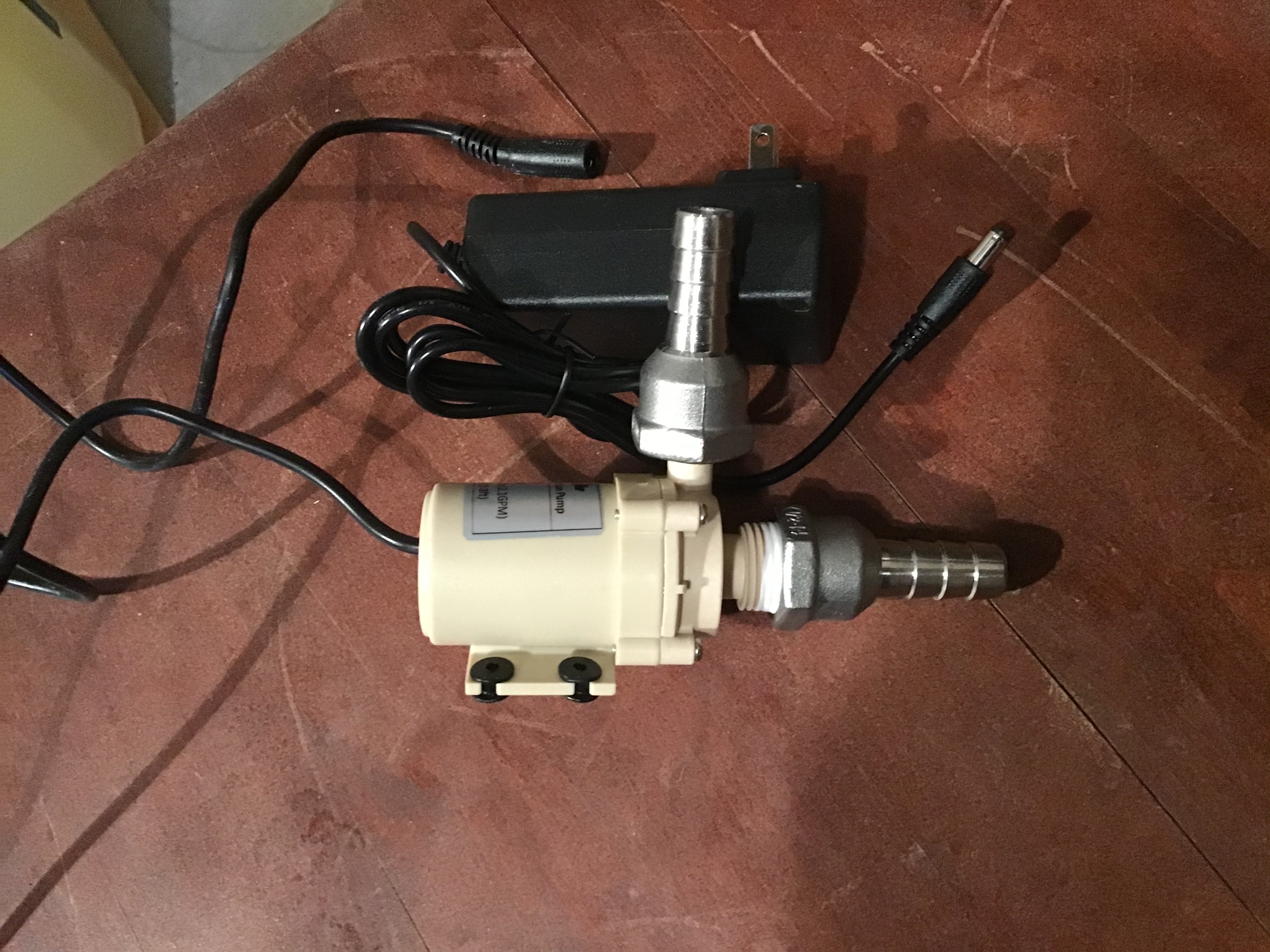slogger
Well-Known Member
I've been brewing for years and about to make the jump to all grain. I would like to hear from all of you with experience in these two brewing styles - pros and cons. Thanks in advance. I appreciate all response.


To me, BIAB makes sense if you are space constrained and/or want to keep your process as simple as possible. But once you start talking about building hoists to suspend heavy grain bags, or even what kind of insulated gloves you need to get the best bag squeeze, that's where it becomes silly IMO.
As far as pros and cons... with a typical BIAB setup, you can't really do a proper vorlauf or sparge, and mash temps are hard to maintain. People can decide for themselves if those things are important.



![Craft A Brew - Safale S-04 Dry Yeast - Fermentis - English Ale Dry Yeast - For English and American Ales and Hard Apple Ciders - Ingredients for Home Brewing - Beer Making Supplies - [1 Pack]](https://m.media-amazon.com/images/I/41fVGNh6JfL._SL500_.jpg)








+1 for common sense!Hi Slogger,
I started out brewing in college with buckets of extract, and once I bought I house, like a poster above, I moved to a MoreBeer TippyDump 3 vessel system. It served me well for a while, and I enjoyed the process, but after a couple of long distance moves I quickly downsized to a single 15 gallon pot and Blichman hellfire burner that I BIAB in. I've done probably 25 5 gallon batches in it, and have honestly never been happier. The day moves so much faster, the cleaning is easier and I honestly can't taste any difference in what I remember to now.
I did buy my own grain mill and have it set to a very fine grain; that took care of any efficiency problems. At the conclusion of the mash, I pull the bag out of the hot wort and put it in a bucket with a false bottom. I let it drain for the first half of the boil and then dump whatever has collected directly into the pot for the 2nd half of the boil. Squeezing has never been necessary.
Yeah, my mash temps are not as precise as they were, but I'm not convinced that it makes all that much difference in the end result. I think a controlled fermentation temperature is FAR more important to the end result and flavor.
If you're looking to control every little variable in the process, BIAB isn't for you. If you just enjoy making good beer and serving it to your friends with a minimum of hassle and time, it's a great solution.
Yep! 26.50 from Amazon....recirculates Hot 2.1 gpm 12 volt. I changed brass fittings to stainless steel. I have two of them. They are great for transferring fluids. 2.75 inches big. Solar recirculating non-self priming pump. Submersible.It’s kind of an in-between for what you asked, but I have loved using the digimash 9 gallon electric kettle with the strainer insert.
Electric means indoor options in the winter, and because the grain is not in a bag, you can sparge easily without needing a whole 3 pot setup. Ihave brewed 50 gallons with it so far and never had an issue. Only thing I added was a recirc pump from amazon to keep it flowing during the mash. Seems to help with my efficiency

To me, BIAB makes sense if you are space constrained and/or want to keep your process as simple as possible. But once you start talking about building hoists to suspend heavy grain bags, or even what kind of insulated gloves you need to get the best bag squeeze, that's where it becomes silly IMO.
As far as pros and cons... with a typical BIAB setup, you can't really do a proper vorlauf or sparge, and mash temps are hard to maintain. People can decide for themselves if those things are important.

Another myth is that BIAB doesn't make clear beer. Here's a recent brew:
... I feel I have to point out that I didn't put forth any myths in my post, so I'm not sure where "another" is coming from!
...mash temps are hard to maintain.
I was being courteous by referring to it as a myth, but if you're uncomfortable with that language I'll be glad to call it what it clearly is: ********.
Hmmmm... sounds like the kitchen remodel was perhaps more wife friendly than home-brewer friendly - just maybe?I looked at robo-brew systems but they weren't worth the money to me. My beer making goal over the last 5 years is to NOT spend any more money on equipment. The thing that is getting in the way of that thinking is that I did a kitchen remodel and brewing in the new kitchen isn't as convenient. I now have to worry about the countertops and the floor, and the table I used as a mid point in height is no longer there so siphoning is a little harder. Even the faucet had changed and I can no longer screw my wort chiller into the kitchen sink, nor my carboy jet washer. I worked around all these the first and only time I brewed in it, but I need to look at a few improvements. The quartz countertops are so hard that glasses have cracked when they've tipped over. Imagine hitting a glass carboy on it...
Actually the kitchen was for me. I just wasn't thinking about brewing when we designed it as I hadn't brewed in 3-4 years at that point.Hmmmm... sounds like the kitchen remodel was perhaps more wife friendly than home-brewer friendly - just maybe?
